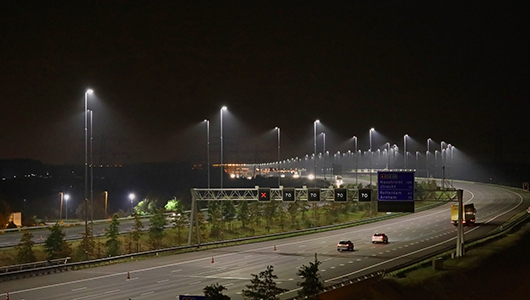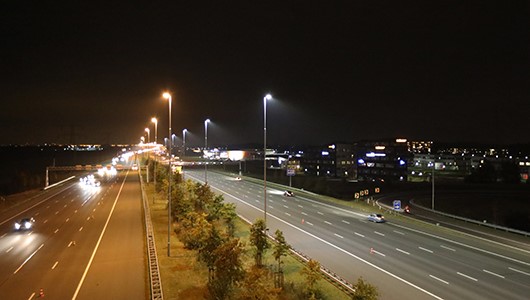The A2 motorway in the Netherlands is one of the busiest in the country, connecting the capital city Amsterdam to Liège, in Belgium. The lighting on certain sections of the motorway was no longer meeting the required levels and needed to be replaced.
Rijkswaterstaat (the Dutch motorway authority) wanted an energy efficient solution that would help them meet their objectives of reducing their energy consumption for public lighting by 20% for 2020.
A lighting solution with LED technology appeared to be the ideal solution but as certain sections of the motorway are quite large - with up 12 lanes - they wanted to be certain that they could light all sections of the motorway.
 |
|
The A2 motorway in the Netherlands relit with LED lights. (All photos courtesy of Schréder) |
In June 2016, they set up a pilot project with Teceo LED luminaires from Schréder installed in the central reserve of a 500m long section of the motorway between Breukelen and Vinkeveen. They could thus test whether the LED luminaires would provide the correct light output and uniformity over 12 lanes of traffic. The test was successful, with all lanes receiving the correct lighting levels to comply with the norms and standards that ensure safety for motorists.
In October 2016, they proceeded to install more than 600 Teceo luminaires (310W) to replace the old fixtures equipped with 440W lamps along the A2 between Maarssen and Holendrecht. The luminaires are installed at a height of 20m with spacing of 46.5m in the central reserve of the motorway.
The Teceo luminaires will reduce energy consumption by 241,600kWh per year, generating savings of 38% compared to the old lighting system and will cut CO2 emissions by approximately 116 tonnes.
Maintenance costs will also be significantly reduced.
 |
On the left: A2 with old fixture. Right: A2 with new Teceo LED luminaires.
|
In addition, the Teceo luminaires diffuse a bright, white light that significantly improves visibility on the motorway and minimize light pollution as the optics are designed to direct all emitted light onto the motorway.
Rijkswaterstaat are delighted with the new lighting which will help them achieve their objective of an energy neutral Dutch infrastructure by 2030.













